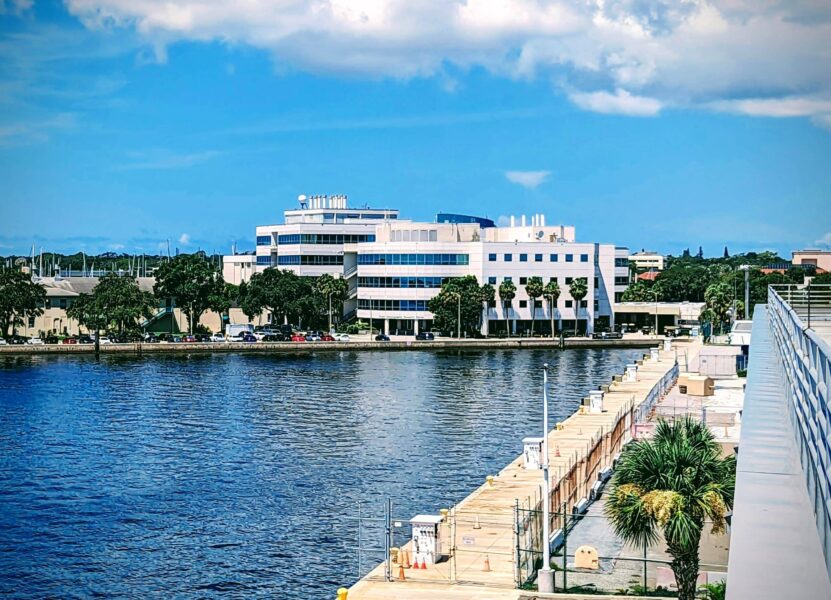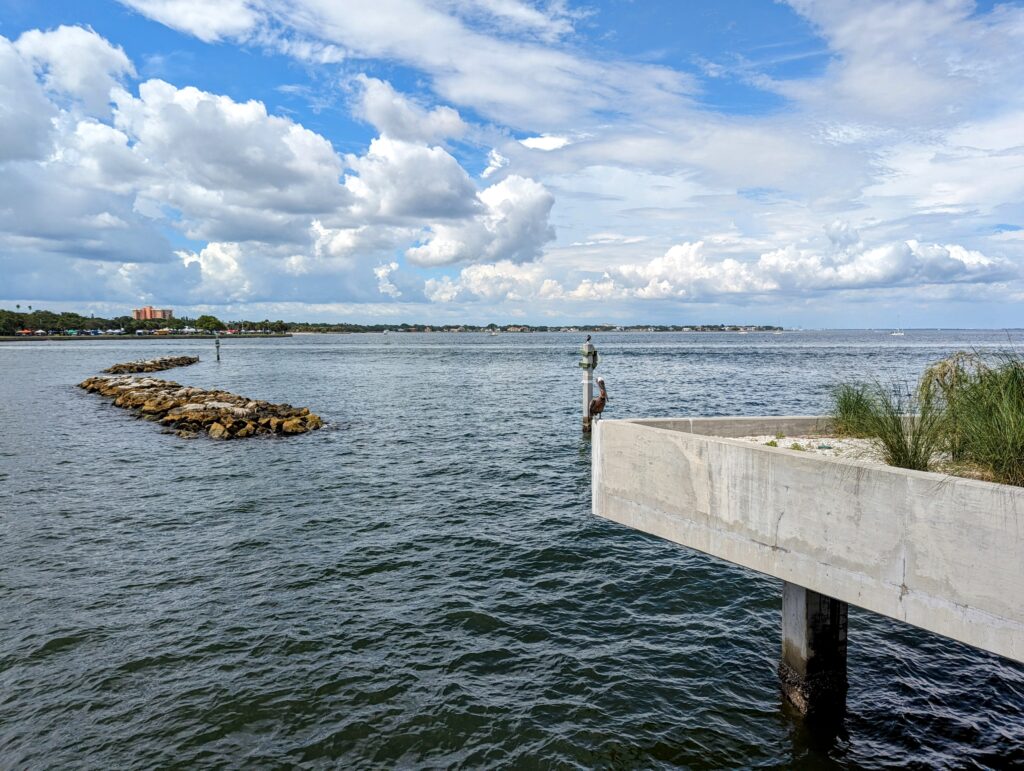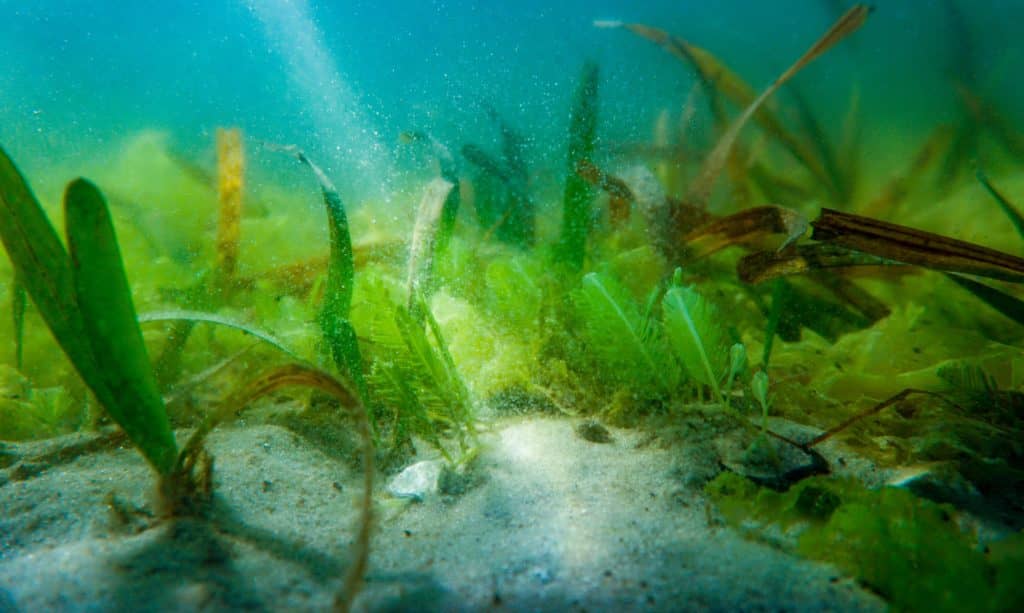Thrive
Researchers: Tampa Bay is in hot water

A massive untreated wastewater spill during Hurricane Debby was not the only alarming news announced this week concerning area estuaries.
While sea surface temperatures continue rising globally, the problem is more prominent in Tampa Bay and estuaries to the south. Regional waters warmed 500% faster than the world’s oceans, according to scientists at the University of South Florida St. Petersburg.
In addition to Tampa Bay, the local researchers studied the Caloosahatchee River Estuary around Fort Myers, Florida Bay, between the Everglades and Keys, and the St. Lucie Estuary along the state’s southeastern coast. Those surface temperatures soared 70% faster than the Gulf of Mexico between 2003 and 2023.
Dr. Chuanmin Hu, a professor at the College of Marine Science and study co-author, has led research on catastrophic red tides and a seaweed mass visible from space – often offering more measured observations than statewide colleagues. However, he expressed astonishment at his latest findings.
“I don’t know about the others, but I was surprised,” Hu told the Catalyst. “Not just because the coastal waters around Florida warmed faster than global oceans, but because they warmed much faster. Several times faster.
“You can’t say this for every estuary.”

Tampa Bay as seen from the St. Petersburg Pier. Photo by Mark Parker.
He noted that most estuaries around the Gulf “pretty much” kept pace with global warming trends over the past two decades. South Florida and Tampa Bay were outliers.
Estuaries serve as nurseries for marine animals beginning their lives. Tampa Bay also fosters seagrass beds, which, in turn, provide food and critical habitats for manatees.
Tampa Bay lost 12% – 4,161 acres – of seagrass between 2020 and 2022. Local researchers blamed the die-off on contaminated wastewater, freshwater intrusion and increased temperatures.
The study abstract states that in July 2023, surface temperatures in Manatee Bay reached a global record-breaking 101.1 degrees Fahrenheit. “Furthermore, the warming trend appears to have accelerated over the past decade. In the context of global warming … such a warming trend and response to heatwaves may lead to more heat stress on the precious coral reefs and seagrasses, both in and downstream from these already fragile estuaries,” it read.
Hu said marine life impacts hinge on heat duration. “Seagrass may be under stress, or it can simply die if the water is too warm for a prolonged time.”
The 2023 marine heat wave endured for two months. Clearwater Beach water temperatures hit 90 degrees that May, nearly a month earlier than in 2022. Hu said four or five days is an anomaly.
However, he noted that there were no reports of extensive seagrass loss. “What we do know is there was a widespread coral bleaching event last year,” Hu said.
In July 2023, researchers reported that Florida “lost almost all the corals” in the lower keys. Clearwater Beach’s water temperatures reached the 90-degree benchmark in May this year.
Brian McNoldy, a tropical meteorology researcher at the University of Miami, subsequently told the Associated Press that heat in the Gulf “really went off the rails last spring, and they haven’t gotten back to the rails since then.”
Hu noted that increased temperatures and wastewater runoff also foster harmful algae, which cause red tide. He said there is not yet evidence of an impending bloom.
Sea surface temperatures modulate Tampa Bay and the state’s climate. Increasing water heat will influence the air temperature, creating an unvirtuous cycle.
Hu said area water temperatures will, on average, continue increasing for the next 10 to 50 years. However, he said it would fluctuate, and the acceleration rate could eventually stabilize.
“At a certain point, there should be a balance,” Hu said. “We just don’t know when that is.”

In 2022, researchers said the loss of seagrass in Old Tampa Bay “is a clear indicator that an increase in efforts needs to be pointed in that direction.” Photo: Tampa Bay Estuary Program.
Hu, along with Jing Shi, a doctoral student at the College of Marine Science and the study’s first author, will continue investigating the phenomenon. Shi said stakeholders “must face the truth, even when it’s bad.”
Hu offered a glimmer of optimism. He noted that local water temperatures decreased in June and July, and rainfall from Debby will help reduce heat in estuaries.
Hu stressed that the situation could be worse – corals can recover, and seagrass has not recently died en masse. He called the study alarming but said the effects, so far, are minimal.
While Hu emphatically stated that “our generation” cannot reverse the warming trends, he does believe people can help stabilize the acceleration rate by reducing their carbon footprints and keeping pollution from reaching local waterways.
“It’s just to slow the process,” Hu added. “Nobody can stop the process.”








Infinitblk
August 12, 2024at5:43 pm
Sea temperatures are rising but arctic ice is cooling. Just stop!
JOEL CARLSON
August 12, 2024at3:02 pm
How shallow are Gulf Waters, to the Atlantic or Pacific Oceans???
David Dean
August 12, 2024at7:47 am
It’s summer time. The coasts haven’t had their upwelling yet. Then you’ll cry how the waters have cooled
Don Flower
August 11, 2024at7:10 pm
I agree with several of the comments. You don’t need a degree or PHD to know that smaller bodies of Water will warm faster especially when they are shallow.
Maybe use some common sense with all that education or maybe they couldn’t come up with an explanation with all that education.
Jim
August 11, 2024at2:28 pm
This looks like an alarmist article. To put it on laymen’s terms “shallow water is heating up faster than deep water” big mystery discovered!
Charlie Harris
August 11, 2024at10:33 am
Wow what a insight I had no idea here the government wants us to believe it’s all our fault but in reality part if not most is nature Thank You
Steve Sullivan
August 11, 2024at10:29 am
Steven Brady, stay away from AI. It is widely known to be inaccurate when asked to think for itself. And, you Sir, are right and wrong! Yes, it’s obviously a naturally occuring event but to present it as something we shouldn’t be worried about, I call bogus hogwash on you. The Piney Point spill is a good example of mans activity having impacted a red tide event and the stresses put on our marine systems. I’ll bet you’re not even from Florida. No, true Floridian, talks or thinks that way but dumb politicians who want to enrich themselves financially. As a matter of fact, next time you want some water walk down to your local body of water and get a glass from there. Don’t you realize, the more you pollute the higher your taxes and fees are?
Bryan
August 11, 2024at6:22 am
I have gone fishing at the Skyway for over 30 years. This year has been the worst ever. No catches and the water is so hot it kills the bait. Discontinuing my trips there.
Narcisso88
August 11, 2024at4:53 am
The above statement sounds like a representative of fertilizer companies or otherwise sugar cane companies who pay them to put out false information from studies paid for (controlled by) them. Much like the BP oil spills, they pay for the studies to make them look like they didn’t do anything, alleviating tax dollars for a government study, however the stipulation of paying for a study means that the information belongs to the one who paid for it. Then much like BP, the sugar industry which constantly dumps fertilizer into rivers and lakes in Florida. Most aggressively lake Okeechobee, where they release all of these nutrients down the caloosahatchee River which drains into the Gulf of Mexico and Fort Myers at Fort Myers Beach and you can literally see it on Google Earth tainting the water and it didn’t always do this. Especially being that they do not drain the top of the lake they drain the bottom of it releasing all of the filthy sludge and pollutants that have sunken to the bottom. Realistically running this into the Atlantic would have made more sense being that the Atlantic could handle it. The gulf cannot and as a result they are killing the entire Gulf of Mexico with toxins and nutrients that will just continue to feed red tides. It isn’t just the nutrients doing this, it is the tannin and sediment that absorb more heat from sunlight and as a result these Waters become toxic nests breeding bacteria such as vibrio flesh eating bacteria, and these toxic algae blooms. Politicians get million dollar handshakes to keep turning their eyes away from this. Look towards your local politicians in the areas around the sugarcane fields, are they living outside of their pay grade?
Robert J Bradley
August 10, 2024at7:50 pm
Thank you.
Steven Brady
August 10, 2024at4:38 pm
From artificial intelligence… A little background on red tide.
It’s understandable to think that red tide must definitely be caused by human activities, especially when considering factors like pollution and fertilizer runoff. However, the reality is more complex, and scientists are still working to fully understand the causes of red tide.
Red tides have been occurring naturally for centuries, long before human activity could have been a factor. Historical records show that Spanish explorers reported fish kills in the Gulf of Mexico as early as the 1500s, which were likely caused by red tide. The first scientifically documented red tide in Florida was in the mid-1800s, again well before the modern industrial era.
While it’s true that nutrient pollution from human sources, such as agricultural runoff, can exacerbate red tide, it’s not as clear-cut as saying that humans are the sole or primary cause. Red tides are influenced by a variety of factors, including natural nutrient upwelling, ocean currents, water temperature, and salinity. These factors can cause *Karenia brevis* algae, which is responsible for red tide, to bloom even in areas with minimal human impact.
In short, while human activities might make red tide events worse or more frequent in some cases, red tides are a naturally occurring phenomenon with a long history. The exact reasons why red tides happen, and why they happen when they do, remain somewhat uncertain. Scientists are continuing to study these events to better understand the complex interactions between natural and human factors.
And regarding climate change… No scientist should be surprised that it can happen rapidly and unexpectedly. Only 20,000 years ago, the sea level levels around our area were 400 feet lower than what they are now. Google it.